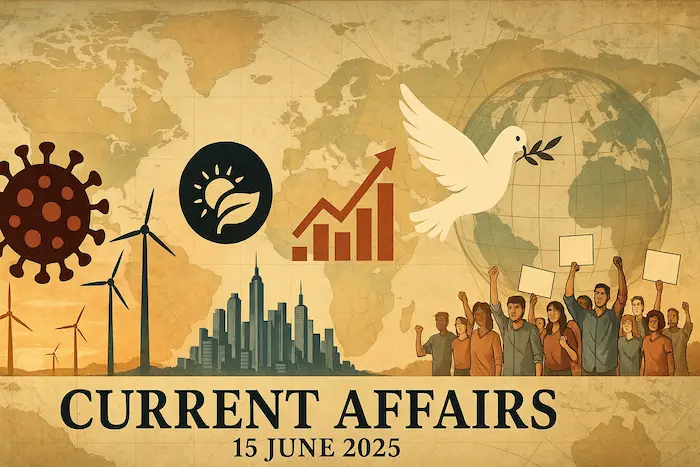1. Forest Rights Act Cells Under DAJGUA – Governance
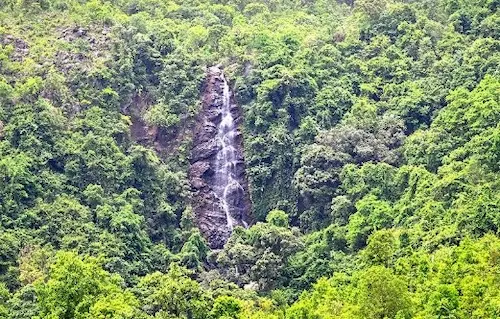
Why in News?
The Ministry of Tribal Affairs has approved the creation of Forest Rights Act (FRA) Cells at both district and state levels across 18 States and Union Territories, under the Dharti Aba Janjatiya Gram Utkarsh Abhiyaan (DAJGUA) initiative.
Background: Forest Rights Act (FRA), 2006
- Objective: Recognizes the rights of forest-dwelling Scheduled Tribes (STs) and Other Traditional Forest Dwellers (OTFDs) over forest land and resources.
- Rights Recognized:
- Individual forest rights (IFR)
- Community forest rights (CFR)
- Rights to protect and manage forest resources
- Implementation Challenges: Lack of administrative support, awareness among beneficiaries, and bureaucratic delays.
What is DAJGUA?
- Full Form: Dharti Aba Janjatiya Gram Utkarsh Abhiyaan
- Launched: October 2024
- Coverage: Over 63,843 tribal-dominated villages; more than 5 crore tribal people
- Aim: Holistic tribal development through:
- Infrastructure
- Livelihood
- Education
- Health
- Inspired By: PM-JANMAN scheme (for PVTGs)
Key Features of FRA Cells
| Feature | Description |
|---|---|
| Purpose | To support implementation of FRA, 2006 |
| Function | Assist tribal claimants & Gram Sabhas in preparing/submitting forest rights claims |
| Funding | Central government-funded (first structured financial support for FRA by Centre) |
| Level of Operation | District and State-level cells in 18 states/UTs |
| Focus Areas | Tribal-dominated districts, ensuring legal empowerment of forest communities |
Budgetary Allocation
- Total Outlay: ₹79,156 crore
- Central Share: ₹56,333 crore
- State Share: ₹22,823 crore
Significance for Tribal Empowerment
- Strengthens decentralized governance via Gram Sabhas
- Enhances tribal access to legal rights over land and forest resources
- Promotes socio-economic development through secure land tenure and resource access
- Facilitates effective convergence of welfare schemes at the village level
Summary
The Government of India, through the DAJGUA initiative, is establishing Forest Rights Act Cells at district and state levels to streamline the implementation of the Forest Rights Act, 2006. These FRA Cells are intended to provide administrative and legal assistance to tribal communities in claiming their forest rights. With over ₹79,000 crore in funding, the initiative marks a significant shift towards institutional support for tribal land rights and holistic development in tribal areas.
Exam Connect – Possible Questions
Prelims
- The Forest Rights Act, 2006 primarily aims to:
A. Provide employment to forest dwellers
B. Recognize land and resource rights of forest-dwelling communities
C. Promote commercial forestry
D. Establish urban settlements in forest areas
Answer: B. Recognize land and resource rights of forest-dwelling communities - Which of the following schemes inspired the DAJGUA initiative?
A. Vanbandhu Kalyan Yojana
B. PM-JANMAN
C. Mission Antyodaya
D. Pradhan Mantri Awas Yojana (Gramin)
Answer: B. PM-JANMAN - What is the primary function of FRA Cells?
A. Police forest areas
B. Promote forest tourism
C. Assist Gram Sabhas and tribal claimants in filing forest rights claims
D. Maintain wildlife sanctuaries
Answer: C. Assist Gram Sabhas and tribal claimants in filing forest rights claims
Mains
- “Institutional mechanisms like FRA Cells are vital for the success of pro-tribal legislation like the Forest Rights Act, 2006.” Examine the statement in the context of recent developments under DAJGUA.
- Discuss the role of decentralization and Gram Sabha empowerment in ensuring the effective implementation of forest rights in India.
- Highlight the challenges tribal communities face in realizing their legal rights over forest land and evaluate how initiatives like DAJGUA can help bridge the gap.
2. Centre’s FRA Cell Initiative: Boosting Implementation of Forest Rights Act (FRA), 2006 – Governance
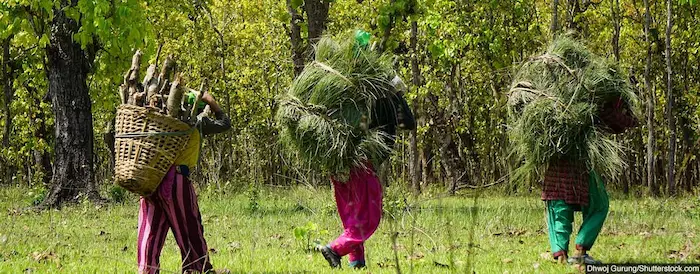
Why in News?
The Union Government has initiated direct funding and support for over 300 FRA Cells at the district and state levels to enhance the implementation of the Forest Rights Act (FRA), 2006. This structural reform marks a shift from advisory to active financial and administrative involvement by the Centre.
Forest Rights Act (FRA), 2006 – At a Glance
- Objective: Redress historical injustice faced by Scheduled Tribes (STs) and Other Traditional Forest Dwellers (OTFDs).
- Key Provision: Decentralizes power to Gram Sabhas, which establish Forest Rights Committees (FRCs) to process land and community claims.
- Scope: Legal recognition of:
- Individual Forest Rights (IFR)
- Community Forest Rights (CFR)
- Rights over minor forest produce
- Rights to protect and manage forest resources
About FRA Cells under DAJGUA
| Feature | Description |
|---|---|
| Structure | Over 324 FRA Cells at district level across 18 States/UTs |
| Function | Provide technical and administrative support to FRA claimants and Gram Sabhas |
| Support Activities | Document preparation, tracking of claims, inter-agency coordination |
| Funding Route | Grants-in-Aid General from the Ministry of Tribal Affairs |
| Primary Aim | Streamline FRA claim process and reduce delays in recognition of rights |
Broader Context: DAJGUA Initiative
- Full Form: Dharti Aba Janjatiya Gram Utkarsh Abhiyaan
- Launch: October 2024
- Coverage: ~68,000 tribal-majority villages
- Focus Areas:
- Land and forest rights
- Tribal livelihoods
- Infrastructure, education, and health
- Policy Shift: Marks Centre’s transition from an advisory role to active implementation partner in tribal rights governance
Current Implementation Challenges
- As of March 2025, 14.45% of claims under FRA remain pending.
- Gaps in state capacity, poor documentation, lack of awareness among beneficiaries.
- Critics warn of:
- Creation of a parallel implementation mechanism
- Risk of undermining statutory role of Gram Sabhas under FRA
- Need for clear role demarcation between central FRA Cells and local institutions
Significance
- Positive Step: Central funding provides much-needed administrative backbone to improve FRA processing.
- Empowerment Tool: Enables communities to assert control over forest resources and promotes inclusive governance.
- Need for Balance: FRA Cells must complement, not compete, with the Gram Sabha-led statutory process.
Summary
The Government’s move to fund and operationalize FRA Cells under DAJGUA reflects a significant policy shift toward enhancing the implementation of the Forest Rights Act, 2006. These Cells are expected to offer direct administrative and technical support in tribal districts, potentially accelerating the recognition of forest rights. However, concerns about duplicating roles and weakening the authority of Gram Sabhas highlight the need for coordination and clarity in the implementation structure.
Exam Connect – Possible Questions
Prelims
- The Forest Rights Act (FRA), 2006 recognizes which of the following rights?
- Grazing rights
- Ownership of minor forest produce
- Community rights over forest resources
- Commercial exploitation of forests
A. 1, 2 and 3 only
B. 1 and 4 only
C. 2, 3 and 4 only
D. All of the above
Answer: A. 1, 2 and 3 only
- Which of the following bodies plays a statutory role in processing claims under FRA, 2006?
A. Forest Department
B. Panchayati Raj Institutions
C. Gram Sabha
D. District Magistrate
Answer: C. Gram Sabha - The FRA Cells set up under DAJGUA are funded through:
A. Corporate Social Responsibility (CSR)
B. State Budgets only
C. Grants-in-Aid General from Ministry of Tribal Affairs
D. Finance Commission Grants
Answer: C. Grants-in-Aid General from Ministry of Tribal Affairs
Mains
- The Centre’s initiative to fund FRA Cells marks a policy shift in tribal welfare governance. Critically examine its potential to strengthen the implementation of the Forest Rights Act, 2006.
- Discuss the challenges in the implementation of the Forest Rights Act, 2006 and evaluate how the establishment of FRA Cells may help resolve them.
- How can institutional interventions like FRA Cells under DAJGUA strike a balance between administrative efficiency and the constitutional role of Gram Sabhas?
3. Brewing Crisis: Climate Change & India’s Tea Heartland – Environment
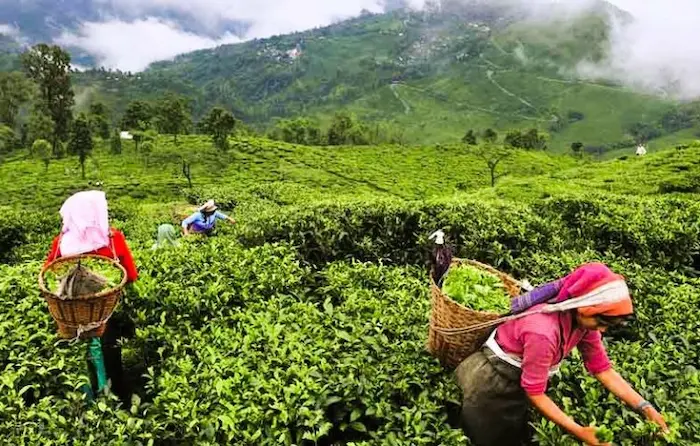
Why in News?
North Bengal’s tea gardens are facing a climate-driven crisis, significantly impacting tea yield, quality, and workers—especially women. This unfolding environmental and social crisis reveals a broader lack of policy attention to the tea sector, which is critical for employment and exports.
Location Context: North Bengal
- Darjeeling, Jalpaiguri, Alipurduar districts – known for premium tea production
- Employs thousands, majority being female field workers
- Tea is both a livelihood source and export commodity
Key Challenges
| Category | Issues |
|---|---|
| Climate Impact | – Extreme heat exposure during peak summer (April–May) – Erratic rainfall disrupting soil and crop cycles – Reduced yield & degraded tea quality |
| Gender-Specific Issues | – No créches or sanitation facilities – Children tied to trees while mothers work – Increased exposure to leopard attacks in climate-altered ecosystems |
| Economic Struggles | – Daily wages around ₹250 not enough for basic needs – Workers face food insecurity and poor access to healthcare |
| Human-Wildlife Conflict | – Wildlife like leopards increasingly enter estates – Lack of safety mechanisms leaves workers vulnerable |
| Policy Neglect | – Tea sector excluded from key climate and employment policies – Limited state/federal climate adaptation support |
Adaptive Measures: Climate-Resilient Practices
| Practice | Purpose |
|---|---|
| Organic Farming | Reduces chemical use; improves soil health |
| Mulching | Conserves moisture in dry spells |
| Intercropping | Prevents soil erosion; adds biodiversity |
Despite these efforts, adoption is still limited and not well-supported by public policy or institutional funding.
Summary
North Bengal’s tea gardens illustrate the intersections of climate change, gender, and economic injustice. As rising temperatures and erratic rainfall disrupt tea production, women workers face the brunt—through unsafe working conditions, low wages, and health risks. Though some estates are moving toward climate-resilient farming, broader policy reform and worker-centric interventions are essential for the sustainability of both the tea sector and the communities that rely on it.
Exam Connect – Possible Questions
Prelims
- Which of the following climate-resilient practices are used in tea estates to combat climate change?
- Intercropping
- Organic farming
- Mulching
- Stubble burning
A. 1, 2 and 3 only
B. 2 and 4 only
C. 1 and 4 only
D. All of the above
Answer: A. 1, 2 and 3 only
- Which Indian region recently witnessed a tea crisis due to climate change and socio-economic issues?
A. Nilgiris
B. North Bengal
C. Assam Valley
D. Palampur
Answer: B. North Bengal - Which of the following is not a direct impact of climate change mentioned in the context of North Bengal’s tea sector?
A. Increased groundwater recharge
B. Erratic rainfall disrupting crop cycles
C. Decrease in tea yield
D. Human-wildlife conflict
Answer: A. Increased groundwater recharge
Mains
- “Climate change is not just an ecological issue but a social and economic one.” Discuss this statement with reference to India’s tea industry.
- Highlight the vulnerabilities of female tea plantation workers in the face of climate change. Suggest integrated policy measures to ensure both environmental and social resilience.
- Analyze how climate change impacts traditional industries like tea in India. What adaptive and mitigation strategies can be implemented at both community and policy levels?
4. Emperor Penguins and Climate Change – Environment
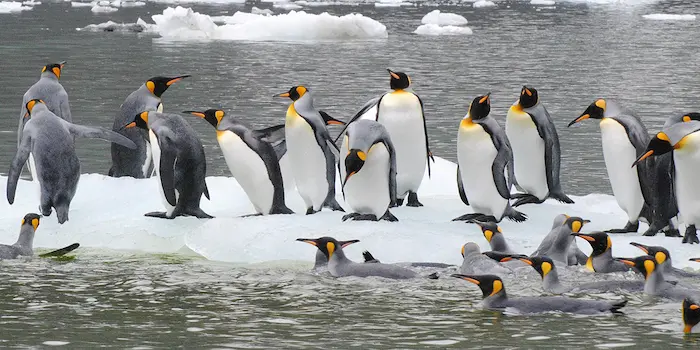
Why in News?
Recent studies have raised concerns that emperor penguins, iconic to the Antarctic ecosystem, are increasingly threatened due to climate change-induced melting of sea ice — their primary habitat and breeding ground.
About Emperor Penguins (Aptenodytes forsteri)
| Feature | Description |
|---|---|
| Size | Tallest and heaviest of all penguin species |
| Coloration | Black and white body with vibrant orange and yellow markings on head and chest |
| Adaptation | Possess two layers of feathers and a thick fat layer for insulation in sub-zero temperatures |
| Habitat | Live on Antarctic pack ice and surrounding marine waters; entirely dependent on sea ice for breeding |
| Conservation Status | Near Threatened – IUCN Red List |
| Breeding | Breed during harsh Antarctic winters (April–November); males incubate eggs |
| Diving Capacity | World’s deepest-diving bird – can dive up to 550 meters (1,800 feet) |
| Weight Fluctuations | Males often gain and lose significant weight during incubation and feeding cycles |
Climate Change Impact
| Impact | Details |
|---|---|
| Sea Ice Loss | Melting Antarctic sea ice is reducing the area available for breeding colonies |
| Habitat Disruption | Pack ice instability affects chick survival and nesting success |
| Food Access Decline | Changes in ocean currents and temperatures affect krill and fish availability |
| Population Risk | Some breeding sites have already collapsed, raising alarm for species-wide decline by end of the century |
Why It Matters
- Emperor penguins are indicator species: Their status reflects the health of the Antarctic marine ecosystem.
- Their decline signals major ecological shifts caused by climate change — impacting biodiversity, fisheries, and polar climate patterns globally.
Global Conservation Efforts
| Action | Status |
|---|---|
| IUCN Monitoring | Listed as Near Threatened; proposals exist to elevate to Vulnerable |
| Antarctic Marine Protected Areas (MPAs) | Advocated to restrict fishing and industrial activity in key habitats |
| Climate Action Link | Mitigating global temperature rise is critical for long-term penguin survival |
| Scientific Research | Long-term satellite tracking and colony mapping underway to inform policy |
Summary
The emperor penguin, a vital species of the Antarctic ecosystem, is under increasing threat due to the rapid loss of sea ice caused by global warming. As a climate indicator species, their struggle serves as a stark warning about the consequences of environmental degradation in polar regions. Urgent conservation efforts, including climate mitigation and habitat protection, are needed to prevent a potential population collapse.
Exam Connect – Possible Questions
Prelims
- Which of the following statements about emperor penguins is correct?
A. They live in the Arctic region.
B. They are the smallest species of penguin.
C. They rely on pack ice for breeding.
D. They breed during the Antarctic summer.
Answer: C. They rely on pack ice for breeding. - Emperor penguins are categorized as what on the IUCN Red List?
A. Endangered
B. Vulnerable
C. Critically Endangered
D. Near Threatened
Answer: D. Near Threatened - Emperor penguins are known for which of the following adaptations?
- Thick fat layer
- Ability to fly short distances
- Two layers of feathers
- Deep diving for food
A. 1, 2 and 4 only
B. 1, 3 and 4 only
C. 2, 3 and 4 only
D. All of the above
Answer: B. 1, 3 and 4 only
Mains
- “Emperor penguins are a sentinel species for climate change in polar ecosystems.” Discuss the implications of climate change on Antarctic biodiversity using emperor penguins as a case study.
- Examine the ecological significance of emperor penguins and outline the global conservation strategies required to protect their populations.
- Discuss the relationship between Antarctic sea ice decline and the long-term survival of species like the emperor penguin. How should global climate policy respond?
5. What is Merchant Discount Rate (MDR)? – Economy

Why in News?
The Finance Ministry has denied rumors suggesting that the government is planning to reintroduce Merchant Discount Rate (MDR) charges on UPI (Unified Payments Interface) transactions. These rumors had caused concern among merchants and consumers.
What is MDR (Merchant Discount Rate)?
MDR is a fee paid by merchants to banks and payment service providers for accepting digital payments. It is deducted automatically from the transaction amount when a customer pays digitally.
How MDR Works
| Aspect | Explanation |
|---|---|
| Nature of Fee | A percentage of the total transaction value (usually 1%–3%) |
| Recipients | Shared among: – Issuing bank – Acquiring bank – Payment gateway – Card/payment network operator |
| RBI Role | MDR is regulated by the RBI |
| Merchant Agreement | Merchants must sign MDR agreements with their banks to accept digital payments |
| Customer Protection | Merchants cannot pass MDR charges to customers |
Example
If a customer pays ₹1,000 using a digital payment mode with an MDR of 2%:
- Merchant receives ₹980
- ₹20 is distributed among banks and service providers
MDR on UPI & RuPay Transactions
| Policy Update | Details |
|---|---|
| Since 2020 | MDR on UPI and RuPay card transactions has been waived |
| Purpose | Promote cashless economy and digital payment adoption |
| Beneficiaries | Small merchants and low-income consumers who rely on low-cost digital payment methods |
| Clarification | Government reiterates it has no plan to reverse the waiver |
Why MDR Matters
- Encourages digital payments by lowering cost for merchants
- Ensures compensation for financial institutions offering secure payment infrastructure
- Forms part of merchant operational costs in the digital economy
Summary
The Merchant Discount Rate (MDR) is a fee charged to merchants for processing digital payments. While it compensates all stakeholders in the payment ecosystem, the government waived MDR for UPI and RuPay transactions in 2020 to encourage a shift toward cashless transactions, especially for small businesses. Despite rumors, the government has confirmed there is no plan to reintroduce MDR on these platforms.
Exam Connect – Possible Questions
Prelims
- Merchant Discount Rate (MDR) refers to:
A. A tax levied on cash transactions
B. A fee charged to banks by merchants
C. A charge paid by merchants to process digital payments
D. A discount offered by merchants to customers for digital transactions
Answer: C. A charge paid by merchants to process digital payments - Who regulates the MDR framework in India?
A. Ministry of Finance
B. SEBI
C. NITI Aayog
D. Reserve Bank of India
Answer: D. Reserve Bank of India - Which of the following statements is correct regarding MDR on UPI transactions?
A. It was introduced in 2022 for all merchants
B. It was waived by the government in 2020
C. Merchants can pass it on to customers
D. It applies only to international transactions
Answer: B. It was waived by the government in 2020
Mains
- Explain the concept of Merchant Discount Rate (MDR). Discuss its role in the digital payments ecosystem and the implications of waiving MDR on UPI and RuPay transactions.
- Digital payments are crucial for financial inclusion, but cost barriers can hinder adoption. Critically evaluate how MDR policies impact small businesses and suggest ways to ensure sustainability for all stakeholders.
- How does government intervention in regulating MDR charges align with the broader goals of digital India and cashless economy? Analyze the benefits and trade-offs involved.
6. What is Ocean Darkening? – Environment
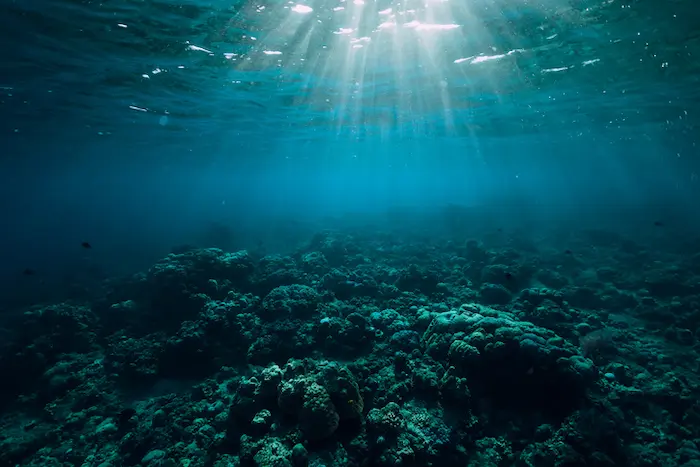
Why in News?
A recent global study has revealed that over 20% of the world’s oceans have darkened significantly in the past two decades. This trend—referred to as “ocean darkening”—raises serious concerns for marine productivity, biodiversity, and climate regulation.
What is Ocean Darkening?
Ocean darkening refers to the reduction in the penetration of sunlight into ocean waters, primarily due to increased suspended particles, organic matter, and biological activity. This phenomenon leads to the shrinking of the photic zone—the sunlit upper layer of the ocean critical for photosynthesis and marine life.
Photic Zone: The Sunlit Layer of the Ocean
| Feature | Details |
|---|---|
| Depth | Extends to about 200 meters below sea level |
| Role | Supports photosynthesis, phytoplankton growth, and 90% of marine life |
| Climate Function | Vital for carbon absorption and climate regulation via the biological carbon pump |
Causes of Ocean Darkening
| Region | Key Drivers |
|---|---|
| Coastal Areas | – Runoff from agriculture: fertilizers, organic matter, sediments – Leads to algal blooms which block sunlight |
| Open Oceans | – Plankton composition changes – Warming sea surface temperatures – Altered ocean circulation affecting light and nutrient mixing |
Impacts of Ocean Darkening
| Impact Area | Consequences |
|---|---|
| Marine Ecosystems | – Species that rely on light (e.g., coral, plankton) are forced into narrower photic layers – Disrupts reproductive cycles, feeding behavior, and migration |
| Marine Food Webs | – Phytoplankton productivity declines, weakening the entire marine food chain – Even minimal fishing pressures compound ecosystem stress |
| Climate Regulation | – Lower photosynthesis = less CO₂ absorption, weakening ocean’s carbon sink function |
| Biodiversity | – Competes for limited light zones, leading to habitat loss and species displacement |
Summary
Ocean darkening is an emerging environmental issue where light penetration in oceans is decreasing due to human-induced runoff and climate change. This affects the photic zones, essential for marine biodiversity, primary productivity, and climate control. With over one-fifth of oceans already affected, urgent global monitoring and policy attention are required to address this silent threat.
Exam Connect – Possible Questions
Prelims
- What does the term “ocean darkening” refer to?
A. Oil spills covering ocean surfaces
B. Decrease in underwater light penetration due to various pollutants
C. Eutrophication of rivers
D. Sudden cooling of sea surface temperatures
Answer: B. Decrease in underwater light penetration due to various pollutants - The photic zone of the ocean generally extends to a depth of:
A. 20 meters
B. 200 meters
C. 1000 meters
D. 500 meters
Answer: B. 200 meters - Which of the following are potential causes of ocean darkening in coastal areas?
- Agricultural runoff
- Organic matter
- Sediment load
- Wind erosion
A. 1, 2, and 3 only
B. 1 and 4 only
C. 2 and 3 only
D. All of the above
Answer: A. 1, 2, and 3 only
Mains
- What is ocean darkening and what are its causes? Discuss its impact on marine biodiversity and global climate systems.
- How does the phenomenon of ocean darkening highlight the intersection of land-based pollution and ocean health? Suggest policy measures for integrated coastal and marine management.
- With more than one-fifth of the global ocean undergoing darkening, evaluate its potential implications for fisheries, global carbon cycles, and food security.
7. What are Black Boxes? – Science and Technology
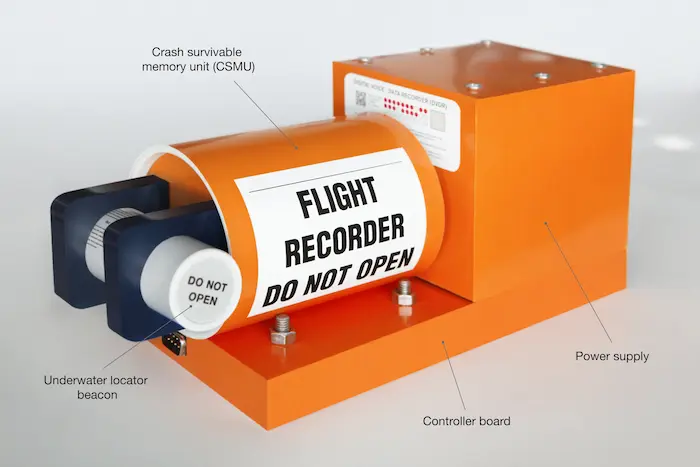
Why in News?
Following a recent aircraft crash in Ahmedabad, authorities have recovered the black box, underscoring its critical role in aviation safety and accident investigations.
What is a Black Box?
Despite the name, black boxes are bright orange containers equipped with flight recording systems. They are designed to withstand crashes and provide investigators with vital flight and audio data for post-accident analysis.
Origin and Development
| Aspect | Details |
|---|---|
| Inventor | Dr. David Warren, Australian scientist (1954) |
| Inspiration | Developed after investigating unexplained mid-air explosions |
| Color | Bright orange with reflective strips to ensure visibility during search operations |
Types of Black Boxes
| Type | Full Form | Function |
|---|---|---|
| CVR | Cockpit Voice Recorder | Records last 2 hours of cockpit conversations, pilot instructions, alarms, etc. |
| DFDR | Digital Flight Data Recorder | Records up to 25 hours of detailed flight data (altitude, speed, engine performance, etc.) |
Note: Modern aircraft may combine both in a single integrated unit.
Technical Features and Design
| Feature | Description |
|---|---|
| Construction | Encased in crash-survivable containers made of titanium or stainless steel |
| Durability | Withstands impact forces, fire (up to 1100°C), and deep-sea pressure |
| ULB (Underwater Locator Beacon) | Emits signals for up to 30 days if submerged in water |
| Location in Aircraft | Typically installed in the tail section, which has a higher survival probability in crashes |
Indian Context
- Aircraft Accident Investigation Bureau (AAIB): India’s agency for investigating civil aviation accidents.
- April 2025 Milestone: Launch of India’s first dedicated Flight Recorders Laboratory in New Delhi to analyze black box data domestically, enhancing India’s aviation safety capabilities.
Summary
Black boxes are indispensable tools for ensuring aviation safety and conducting crash investigations. Equipped with robust recording and durability mechanisms, they provide insights into both flight performance and cockpit communication. India’s push for domestic analysis capability marks a critical step toward self-reliance in aviation accident investigations.
Exam Connect – Possible Questions
Prelims
- Who developed the first practical flight data recorder (black box)?
A. Nikola Tesla
B. David Warren
C. Robert Oppenheimer
D. Alan Turing
Answer: B - Which of the following accurately describes the Cockpit Voice Recorder (CVR)?
A. Records fuel usage
B. Records engine temperature
C. Records cockpit conversations and sounds
D. Tracks aircraft location
Answer: C - Black boxes are usually located in which part of the aircraft?
A. Cockpit
B. Wings
C. Tail section
D. Landing gear compartment
Answer: C
Mains
- Explain the role of black boxes in aviation safety. How has the advancement in black box technology enhanced the accuracy of aircraft accident investigations?
- Discuss the significance of India establishing its first Flight Recorders Laboratory. How does this step contribute to self-reliance in aviation safety and accident response?
- In the context of increasing aviation accidents, examine the importance of data recorders in disaster response, policy formation, and improving flight standards.

